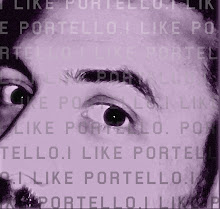Borders bookstores have made the decision to move the book Tintin in the Congo out of the kids section and into the adults section of their stores.
For those who haven't read it, this is the earliest Tintin to be published in the familiar book form, after first appearing as a serial in Belgian newspaper Le Vingtième Siècle. First published in 1931, it tells the story of intrepid reporter Tintin's visit to the Belgian Congo on a hunting trip.
It's easily the most violent and racist of the Tintin books, featuring scenes of animal slaughter and some genuinely shocking colonialism. Africans are portrayed as naive children, desperately in need of the guiding hand of enlightened Europeans to achieve something resembling civilisation. While this is a genuine reflection of European attitudes at the time, it's definitely not for kids.
The thing is, I think similar charges could be made about all the Tintin books, or at least the vast majority of them.
The portrayal of Africans in Tintin in the Congo is a racist and offensive caricature, but portrayals of Chinese people in The Blue Lotus and Native Americans in Tintin in America are not much better. And these are just the most obvious ones. The Tintin books regularly deal with Arabs, Jews and Eastern Europeans in less-than-flattering terms. The only ones that get off scot-free are Western Europeans.
Hergé even has a go at white America, showing it to be full of gangsters and money-obsessed buffoons. But really, that's just funny.
The more I think about it the more I wonder, was this stuff ever really just for kids? It's cut from the same cloth as the Hardy Boys and the Famous Five, with gun running and drug smuggling two of the most common plotlines. But Tintin is much more upfront about the subject matter. People are regularly shot and killed with the guns being run, and the drugs being smuggled aren't just nameless "packages" being moved in the dead of night . . . the drugs are used as poison, or to knock people out. And even to get high. The book Cigars of the Pharaoh, about a narcotics smuggling ring, makes no bones about what this stuff is for, with some really wacky psychedelic imagery. And this was way back in 1934.
So move them all to the adults section, I say. The kids of today's iGeneration surely aren't interested in this stuff. Let's face it, the only people still buying it are boomers and Gen X-ers on a nostalgia trip.
Not that that's a bad thing.



0 comments:
Post a Comment